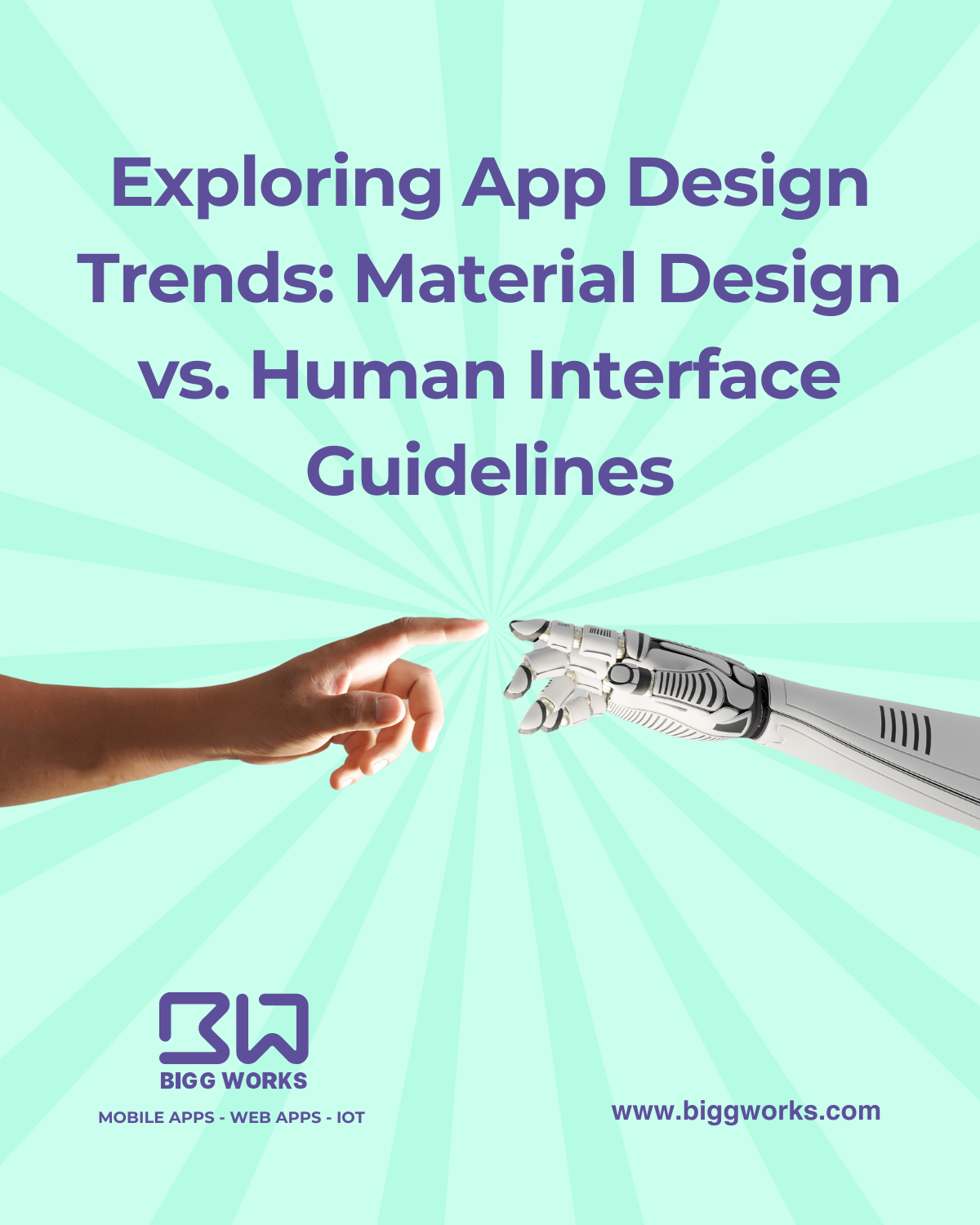Material Design vs. Human Interface Guidelines

In the vibrant landscape of app design, two prominent trends, Material Design and Human Interface Guidelines (HIG), stand out for shaping the visual and interactive aspects of mobile and web applications. This article dives into the distinctive features of Material Design and HIG, unraveling their philosophies and helping designers navigate their creative journey.
Material Design, introduced by Google, embraces a philosophy of realism, offering a consistent design language across platforms. It incorporates tactile, real-world elements to create a visually pleasing and intuitive user experience.
Materiality:Design elements mimic real-world materials, creating depth and motion.
Bold Colors:A vibrant color palette enhances visual hierarchy and engagement.
Typography:Readable fonts and consistent typography elevate user comprehension.
Motion:Subtle animations provide visual cues and add elegance to interactions.
Responsive UI:Designs adapt seamlessly across devices, enhancing accessibility.
Consistency:A unified design language fosters familiarity and ease of use.
Visual Appeal:Material Design's use of bold colors and motion creates engaging interfaces.
Adaptability:Designed with mobile and touch interfaces in mind, Material Design seamlessly scales across platforms.
Apple's Human Interface Guidelines are centered around clarity, depth, and purpose. HIG embraces minimalism and simplicity while prioritizing user-focused experiences.
Key Elements:
Clarity:Visual elements are clear and legible, ensuring ease of use.
Depth:Through shadow and animation, depth adds realism and hierarchy.
Simplicity:Minimalistic design reduces distractions, focusing on core functionality.
Consistency:Consistent design elements create a cohesive experience.
App Iconography:Unique and recognizable icons enhance brand identity and usability.
User-Centric:HIG's focus on clarity and simplicity prioritizes user needs.
Elegance:The integration of depth and minimalism results in visually elegant interfaces.
Brand Identity:Custom app iconography reinforces brand recognition
When choosing between Material Design and HIG, several factors come into play:
Platform:Consider your target platform (Android or iOS) and user expectations.
User Base:Understand your audience's familiarity with design languages.
Brand Identity:Select a design language that aligns with your brand's visual identity.
Design Flexibility:Assess the extent to which you can adapt and customize the chosen design philosophy.
While Material Design and HIG have distinct roots, designers often find ways to harmonize their principles for hybrid designs. Merging elements of both philosophies allows for unique, user-centric experiences that cater to diverse user bases.
The choice between Material Design and HIG hinges on your app's nature, audience, and platform. By understanding the core principles of each philosophy, designers can create interfaces that are both visually appealing and user-focused. Remember, the ultimate goal is to craft interfaces that seamlessly integrate design and functionality, delighting users while delivering on their expectations.
#MobileAppDevelopment #AppDevelopment #NativeApps #CrossPlatformApps #iOSApps #AndroidApps #PWAs #ReactNative #Flutter #Xamarin #MobileTech #CodeEfficiency #UserExperience #AppSolutions #TechInnovation #UIUXDesign #DigitalExperiences #HybridApps #MobileDev #AppProgramming